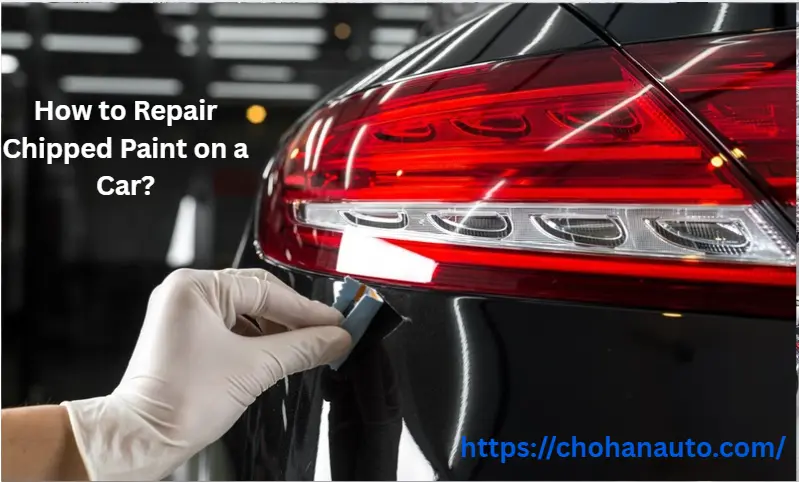How to Repair Chipped Paint on a Car: There’s nothing more frustrating than spotting a paint chip on your car’s smooth, shiny surface. Whether it’s caused by flying gravel, a door ding or a careless cart in a parking lot, chipped paint might seem small, But it can lead to big problems if ignored. The good news? You don’t need to be a car expert to fix it. If you have been wondering how to repair chipped paint on a car, this guide is your go-to solution.
How to Repair Chipped Paint on a Car? Why It’s Important to Fix Chipped Paint Early
It may look harmless now, but that little chip can expose your car’s metal body to moisture and air, leading to rust. Once rust starts, it spreads fast and becomes much more expensive to repair. Fixing the paint early keeps your car looking fresh and protects your investment.
Tools & Materials You’ll Need
Before you jump into action, grab these supplies:
- Touch-up paint (matched to your car’s color code)
- Fine-tip brush or toothpick
- Rubbing alcohol or paint prep solution
- Primer (if the chip is deep)
- Clear coat
- Sandpaper (1500–3000 grit)
- Microfiber cloth
Step-by-Step: How to Repair Chipped Paint on a Car
1. Clean the Area
Wash the chipped area with soap and water, then use rubbing alcohol to remove wax, dirt, and oil. Let it dry completely.
2. Sand the Edges
Lightly sand the edges of the chip to smooth out any peeling paint and create a clean area for the touch-up. Wipe away dust with a microfiber cloth.
3. Apply Primer (if needed)
If the chip has exposed bare metal, apply a tiny amount of primer using a fine brush or toothpick. Let it dry as per the product instructions.
4. Apply Touch-Up Paint
Shake the touch-up paint well and apply a small amount to the chip. Less is more build up the layers slowly. Allow each coat to dry before adding the next.
5. Add Clear Coat
Once the paint is fully dry, seal it with a thin layer of clear coat to protect the repair and give it a glossy finish.
6. Buff & Blend (Optional)
After the repair has dried for at least 24–48 hours, you can lightly buff the area with polishing compound or ultra-fine sandpaper to blend it with the surrounding paint.
Pro Tips for a Professional-Looking Finish
Match your paint using your car’s color code (usually found on the driver’s side door frame).
Always work in a shaded, dust-free area.
Be patient, rushing the process can lead to drips and uneven spots.
Store leftover touch-up paint for future chips.
When to Leave It to the Pros
If the chip is larger than a coin, involves multiple layers of paint, or has already started to rust, it’s best to visit an auto body shop. Professional repair may cost more, but it guarantees a flawless, factory-like finish.
FAQs
Can I repair chipped paint on my car myself?
Yes, small paint chips can be repaired at home using touch-up paint, primer, and clear coat. Just follow the correct steps to ensure a smooth and lasting finish.
Where can I find the correct paint color for my car?
You can find your car’s color code on a sticker located in the driver’s side door frame, under the hood, or in the owner’s manual. Use this code to purchase exact-match touch-up paint.
How long does it take to repair chipped paint on a car?
A basic DIY chip repair can take a few hours, including drying time between coats. For best results, allow the final paint to cure for 24–48 hours before polishing.
Will touch-up paint fix deep paint chips?
Touch-up paint can work for deep chips, but if bare metal is exposed, you should apply primer first. For large or rusted chips, it’s better to consult a professional.
How much does it cost to repair chipped paint professionally?
Professional chip repair can cost anywhere from $50 to $300, depending on the size, location, and severity of the damage. DIY kits are a more affordable option for minor chip repairs.
Conclusion: Small Chip, Big Difference
Now that you know how to repair chipped paint on a car, you can take action before minor damage turns into major rust. With just a few tools and a little time, you’ll restore your car’s look and value in no time.
Because a well-maintained car is not just about performance, it’s also about pride in how it looks.


